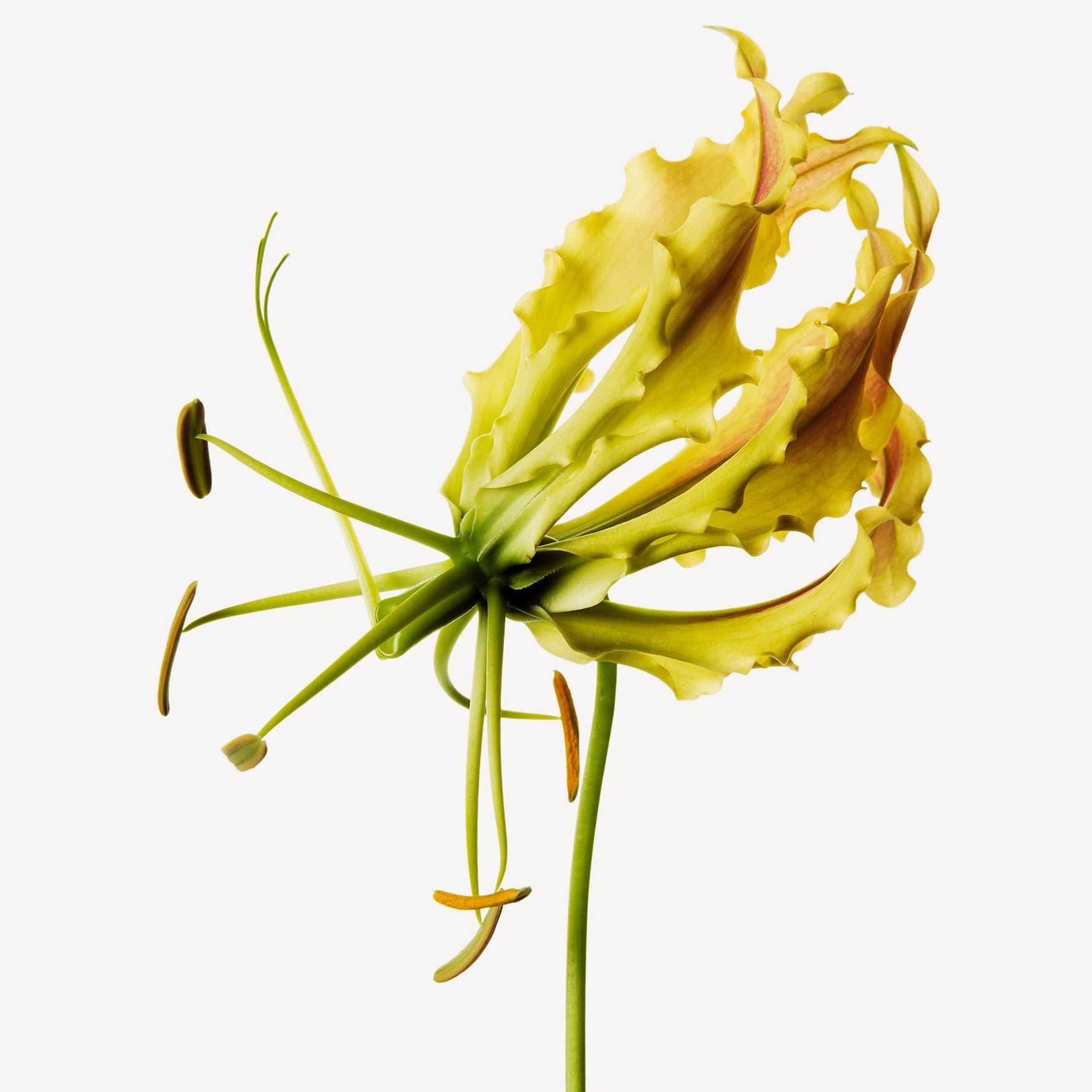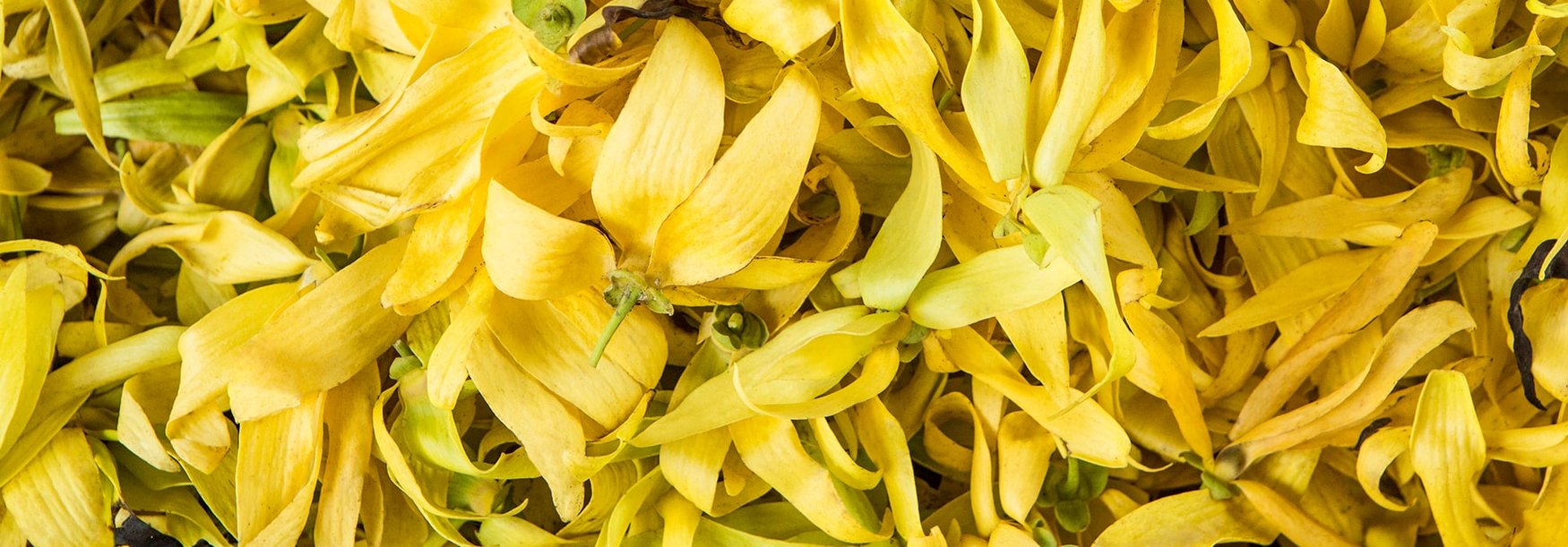Partial to lush, tropical regions, the ylang-ylang tree (otherwise known as Cananga Odorata Genuina) can be found growing in the Philippines, on the Comoro Islands, and in Madagascar. In its wild state, the ylang-ylang tree grows to an impressive height of 15 or 20 meters. However, trees that are pruned on a regular basis will typically only grow to a height of 2 or 3 meters—making it easier to reach its flowers during harvest. There is one variety of ylang-ylang that is most prized by perfumers: genuina. Golden-yellow in color and divinely fragrant, the genuina variety is renowned for producing a higher-quality essence than other ylang-ylang varieties. Its essence is obtained through the steam distillation of fresh flowers. While a mature ylang-ylang tree can yield 20–30 kilograms of flowers per season, a whopping 350–400 kilograms are required to create a single kilogram of its coveted essence. However, when compared to other flowers, this is a rather generous yield. Ylang-ylang flowers are picked in the early hours of the morn: between dawn and 9am, when its delightful scent is at its height. The flowers must be fully mature, with a red dot at the base of the golden petals before being picked.



